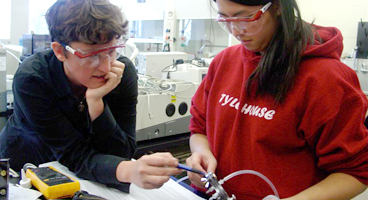Document Type
Article
Publication Date
8-12-2010
Publication Title
Atmospheric Chemistry and Physics
Abstract
One of the major objectives of the Megacities Initiative: Local And Global Research Observations (MILAGRO-2006) campaign was to investigate the long-range transport of polluted Mexico City Metropolitan Area (MCMA) outflow and determine its downwind impacts on air quality and climate. Six research aircraft, including the National Center for Atmospheric Research (NCAR) C-130, made extensive chemical, aerosol, and radiation measurements above MCMA and more than 1000 km downwind in order to characterize the evolution of the outflow as it aged and dispersed over the Mesa Alta, Sierra Madre Oriental, Coastal Plain, and Gulf of Mexico. As part of this effort, free-floating Controlled-Meteorological (CMET) balloons, commanded to change altitude via satellite, made repeated profile measurements of winds and state variables within the advecting outflow. In this paper, we present an analysis of the data from two CMET balloons that were launched near Mexico City on the afternoon of 18 March 2006 and floated downwind with the MCMA pollution for nearly 30 h. The repeating profile measurements show the evolving structure of the outflow in considerable detail: its stability and stratification, interaction with other air masses, mixing episodes, and dispersion into the regional background. Air parcel trajectories, computed directly from the balloon wind profiles, show three transport pathways on 18-19 March: (a) high-altitude advection of the top of the MCMA mixed layer, (b) mid-level outflow over the Sierra Madre Oriental followed by decoupling and isolated transport over the Gulf of Mexico, and (c) low-level outflow with entrainment into a cleaner northwesterly jet above the Coastal Plain. The C-130 aircraft intercepted the balloon-based trajectories three times on 19 March, once along each of these pathways; in all three cases, peaks in urban tracer concentrations and LIDAR backscatter are consistent with MCMA pollution. In comparison with the transport models used in the campaign, the balloon-based trajectories appear to shear the outflow far more uniformly and decouple it from the surface, thus forming a thin but expansive polluted layer over the Gulf of Mexico that is well aligned with the aircraft observations. These results provide critical context for the extensive aircraft measurements made during the 18-19 March MCMA outflow event and may have broader implications for modelling and understanding long-range transport.
Volume
10
Issue
15
First Page
7137
Last Page
7159
DOI
10.5194/acp-10-7137-2010
ISSN
16807316
Creative Commons License

This work is licensed under a Creative Commons Attribution 3.0 License.
Rights
© Author(s) 2010
Version
Version of Record
Recommended Citation
Voss, P. B.; Zaveri, R. A.; Flocke, F. M.; Mao, H.; Hartley, T. P.; Deamicis, P.; Deonandan, I.; Contreras-Jiménez, G.; Martínez-Antonio, O.; Figueroa Estrada, M.; Greenberg, D.; Campos, T. L.; Weinheimer, A. J.; Knapp, D. J.; Montzka, D. D.; Crounse, J. D.; Wennberg, P. O.; Apel, E.; Madronich, S.; and De Foy, B., "Long-range pollution transport during the MILAGRO-2006 campaign: A case study of a major Mexico City outflow event using free-floating altitude-controlled balloons" (2010). Engineering: Faculty Publications, Smith College, Northampton, MA.
https://scholarworks.smith.edu/egr_facpubs/61


